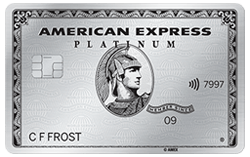MoneySense has ranked the best credit cards in Canada across numerous categories of cards. On this page, however, you’ll find the best of the best: the cards that top their respective categories and cater to the needs of most Canadians. Use the tool below to compare credit card options, or keep scrolling for our editors’ top picks.
Credit card comparison tool
Why trust us
MoneySense is an award-winning magazine, helping Canadians navigate money matters since 1999. Our editorial team of trained journalists works closely with leading personal finance experts in Canada. To help you find the best financial products, we compare the offerings from over 12 major institutions, including banks, credit unions and card issuers. Learn more about our advertising and trusted partners.
The overall best credit cards in Canada
Most Canadians want a new credit card for one of five reasons: to earn rewards on their spending, to borrow money at a low interest rate (compared to other cards), to transfer a current balance to another card, to access perks and benefits, or to establish or improve their credit score. The five cards below are the best the country has to offer, because they are the best at helping Canadians achieve these common goals.
| Best card by category | Highlights | Details | Eligibility requirements |
|---|---|---|---|
| FEATURED American Express Cobalt 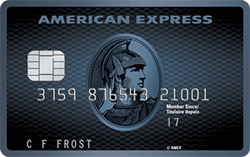 GO TO SITE | Award: Best rewards credit card Who should get it: Canadians who will charge many expenses to the card and want to earn some of the most valuable and flexible travel points available | Annual fee: $156 Rewards: 1 to 5 Membership Rewards points per dollar Interest rates: 21.99% on purchases, 21.99% on cash advances | Income: None specified Credit score: 725 or higher |
Flexi Visa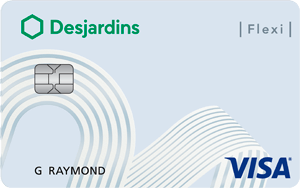 | Award: Best low-interest credit card Who should get it: Canadians who expect to carry a balance on their card and want to minimize the interest charges | Annual fee: $0 Rewards: No rewards Interest rates: 10.90% on purchases and 12.90% on cash advances | Income: None specified Credit score: None specified |
| FEATURED MBNA True Line Mastercard 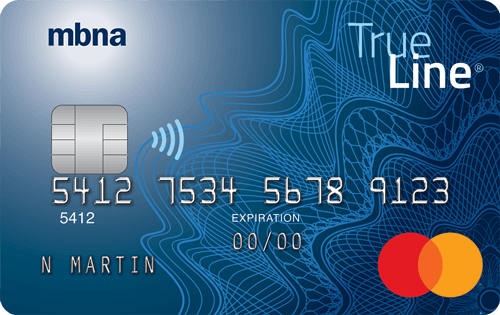 GO TO SITE | Award: Best balance transfer credit card Who should get it: Canadians who currently carry a credit card balance and want to transfer it to a card charging 0% interest for one year | Annual fee: $0 Rewards: No rewards Interest rates: 24.99% on cash advances, 17.99% on balance transfers | Income: None specified Credit score: 660 or higher |
American Express Platinum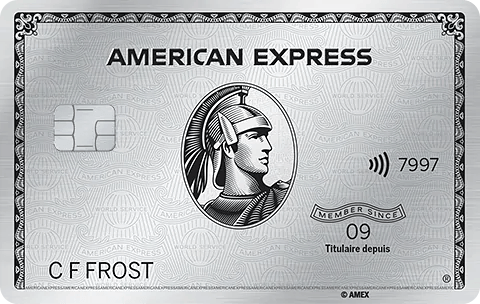 | Award: Best premium credit card for perks and benefits Who should get it: Canadians with a high annual income who want access to a wide variety of perks and benefits, like unlimited airport lounge access and concierge services | Annual fee: $799 Rewards: 1 to 2 Membership Rewards points per dollar Interest rates: N/A (you must pay your balance off in full every month) | Income: None specified Credit score: 760 or higher |
| FEATURED Home Trust Secured Visa (low-rate option) 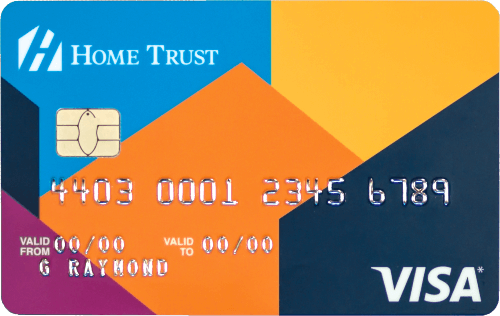 GO TO SITE | Awards: Best credit card for building credit Who should get it: Canadians with a low or no credit score, such as students and newcomers, who want to show they can manage credit well | Annual fee: $0 Rewards: No rewards Interest rates: 19.99% on purchases and 19.99% on cash advances | Income: None specified Credit score: 300 or higher |
Option 1: Getting a rewards credit card
Rewards credit cards, like those that earn cash back and travel points, are most suitable for Canadians who use credit cards for many types of transactions and who generally avoid carrying a balance. Rewards credit cards provide a return on your spending, either in cash or in points that can be redeemed for things like flights and hotel stays. However, many rewards cards also charge an annual fee. If you don’t expect to use the card very often, or if you typically carry a balance on your card, the annual fee and/or interest charges may cost you more than the rewards are worth. For those situations, there are many good no-fee or low-interest credit card options.
Best rewards credit card in Canada
At a glance: The American Express Cobalt card impresses with some of the highest earn rates on top spending categories like “eats and drinks,” which includes any spends at from grocery stores to coffee shops to food delivery. Plus, the travel points are easy to redeem, and you have more redemption options to choose from than with other travel cards in Canada.
featured
American Express Cobalt
Annual fee: $156
Welcome offer: earn 1,250 points for each month you spend $750, up to a maximum of 15,000 points.
Card details
| Interest rates | 21.99% on purchases, 21.99% on cash advances |
| Income required | None specified |
| Credit score | 725 or higher |
| Point value | 1 Amex Membership Rewards point = $0.01 when redeemed with the Flexible Points Travel Program, $0.015 on average with the Fixed Points Travel Program, and up to $0.02 with airline points transfers. |
Frequently asked questions
Your decision for which credit card is best for you and your family will come down to whether a cash back or travel rewards credit card best suits your needs and spending habits. Travel rewards can be lucrative, but what you earn from a cash back card can be spent on anything—or saved.
When considering a cash back card, take stock of your spending habits and pick the card that will earn you the most rewards. For example, if you spend a lot on gas, then pick a card that earns you more cash back at gas stations. High earn rates are great, but keep in mind that many of the top cards have a high income requirement.
Also note that some cash back credit cards will only give you what you’ve earned after you reach a minimum amount or once per calendar year. Find out how you’ll get paid, and make sure you’re okay with it before you apply. If you’re considering a card with an annual fee, make sure the cash back you earn is worth more than the fee. If it’s not, stick to a no-fee card.
Option 2: Getting a low-interest credit card
Credit cards in Canada typically charge about 20% interest on purchases and about 22% on cash advances and balance transfers. However, low-interest cards are designed to save you money on interest (and help you pay off your balance sooner). If you typically carry a balance, a low-interest rate card may be a better option than a perk-filled, rewards-earning option that charges a more standard interest rate.
Best low-interest credit card in Canada
At a glance: If you’re looking for a low-interest credit card, you won’t find a more competitive purchase annual percentage rate (APR) than this card’s 10.90%. The card’s 12.90% on cash advances is also very low compared to the industry standard. Plus, with the Flexi Visa, you get access to a few perks that you’ll generally only find with annual-fee credit cards.
Flexi Visa
Annual fee: $0
Low interest rates: 10.90% on purchases and 12.90% on cash advances
Card details
| Interest rates | 10.90% on purchases and 12.90% on cash advances |
| Income required | Not specified |
| Credit score | Not specified |
Frequently asked questions
Credit card interest is expressed as an annual percentage rate, or APR. It is a fee charged for borrowing money from the credit card issuer. If you’ve paid your credit card balance in full by the end of the billing cycle, you won’t be charged any interest. But if you carry a credit card balance, interest charges begin to accumulate, and you’ll continue to pay interest until you pay your balance back in full.
Though APRs are expressed in annual terms, credit card interest is calculated daily and charged monthly. (The APR represents the total cost of borrowing money for a year.) You can figure out your daily interest rate by dividing your APR by 365 (or 366 during a leap year). For a credit card with a 19.99% APR, your daily rate is 0.0548%.
This means a $1,000 balance will incur $0.54 in interest charges in a single day. And the interest compounds daily, which means that the next day, assuming you don’t make any additional purchases, you’d be charged interest on a total of $1,000.54, and so on. Finally, at the end of the billing cycle, you’re charged interest based on the average daily balance during each one of the days in the billing cycle. So, to determine the amount of interest owed:
- Calculate your daily interest rate by dividing the APR by 365.
- Find your average daily balance by adding up the balances for each day of the billing cycle and dividing it by the number of days in your statement period.
- Multiply your average daily balance by the daily interest rate, and multiply this total by the number of days in the statement period.
That’s why it’s best to pay down your debt as quickly as possible. If you don’t pay off your balance in full by the date noted on your statement, you’ll owe interest, starting on the day that you made your purchase.
Federally regulated financial institutions (think major banks) are required to offer an interest-free grace period of at least 21 days, which begins on the last day of your billing period. Some issuers offer up to 30 days. (Note: This rule doesn’t apply to cash advances or balance transfers.)
Option 3: Getting a balance transfer credit card
While some cards stand out for the regular low purchase interest rate, there are also balance transfer credit cards, which offer an extra-low interest rate (sometimes 0%) for a limited time. Balance transfer cards are most suitable for Canadians who currently have a credit card balance and want to pay it off faster (or simply save money on interest charges).
Best balance transfer credit card in Canada
At a glance: When it comes to making balance transfers, our pick is the MBNA True Line Mastercard, which has a 12.99% interest rate and no annual fee. That said, this credit card’s 3% balance transfer fee is larger than some competing cards, so you might want to consider the latter if you’re transferring a major balance.
featured
MBNA True Line Mastercard
Annual fee: $0
Low interest rate: 12.99%
Balance transfer offer: earn a 0% promotional annual interest rate (“AIR”) for 12 months on balance transfers completed within 90 days of account opening, with a 3% transfer fee. This offer is not available for residents of Quebec.
Card details
| Interest rates | 24.99% on cash advances, 17.99% on balance transfers |
| Income required | None specified |
| Credit score | 660 or higher |
Option 4: Getting a premium credit card
A premium credit card is ideal for Canadians who can fully make use its perks and benefits, such as frequent travellers and high spenders. These cards often come with many travel-related perks, such as airport lounge access, comprehensive travel insurance, dining and travel credits, concierge services, and more. They also typically offer accelerated earn rates and generous welcome offers—all of which help offset the hefty annual fee. Overall, premium cards are best suited for individuals with high spending habits and specific lifestyle needs.
Best premium credit card for perks and benefits in Canada
At a glance: The Amex Platinum gives new meaning to the old saying, “You get what you pay for.” In this case, the $799 annual fee pays for itself through a smorgasbord of incredible perks. Your travel experience will be transformed with unlimited airport lounge access, partnerships at Fine Hotel + Resorts properties and priority treatment at Toronto Pearson Airport. The many perks—like several hundred dollars worth of annual travel and dining credits, and a Nexus fee rebate—go a long way toward offsetting the price tag.
American Express Platinum
Annual fee: $799
Welcome offer: earn up to 100,000 rewards points ($1,000 value). Conditions apply.
Card details
| Interest rates | N/A (as a charge card, you’re required to pay off your balance in full every month) |
| Income required | None |
| Credit score | 760 or higher |
| Anniversary bonus | $200 annual dining credit to use at a curated list of Canada’s top restaurants. Plus, $200 annual travel credit when booking through American Express Travel Online. |
| Point value | 1 Amex Membership Rewards point = $0.01 when redeemed with the Flexible Points Travel Program, $0.015 on average with the Fixed Points Travel Program, and up to $0.02 with airline points transfers. |
Pros
- Credits offset the annual fee: You’ll get a $200 travel credit each year that can be redeemed towards a travel purchase made through American Express Travel Online. Spend your additional annual $200 dining credit at select restaurants around the world, including 100 in Canada.
- Best-in-class airport lounge access: Get access to The American Express Global Lounge Collection composed of more than 1,300 lounges in over 140 countries, including American Express Centurion Lounges, Plaza Premium and Delta Sky lounges. Cardholders may have unlimited free visits and companion passes at no additional cost, depending on the lounge.
- Platinum Concierge service: Obtain personalized assistance from a concierge, who can make restaurant reservations, obtain tickets to special events, book services for you, and more—at no additional cost to you.
- No credit limit: Because it’s a charge card, high-volume spenders are not restricted by a conventional credit limit.
Cons
- High fee for authorized users: Additional cards cost $250 each annually.
- Lackluster travel medical insurance: Whereas some cards offer 20 days or more, this card only covers you for up to 15 consecutive days and doesn’t offer any insurance to those who are 65 or older.
- Can’t carry a balance: Charge whatever you want to the card, but because it’s a charge card, you’re required to pay off the balance in full every month
Option 5: Getting a secured credit card
Secured credit cards are a good option for Canadians who want to establish or rebuild their credit score. These cards require a cash deposit as collateral, which generally becomes the credit limit. This makes secured cards more accessible than other types of cards, because if the cardholder doesn’t make their payments, the lender is protected. Because secured card issuers generally report account activity to one of the Canadian credit bureaus (or both), the cards can be used to establish or rebuild a credit score. There are other non-secured cards that are also extremely accessible to people with no credit history, such as newcomers and students.
Best credit card for building credit in Canada
At a glance: What’s great about this Home Trust card is that you’re given a choice: If you’re willing to pay a modest annual fee of $59, you’ll save on interest with a 14.90% purchase APR. Or, if you prefer no fee, you’ll be charged a higher interest rate of 19.99%. We like that this card gives you the option to choose what works best for you.
featured
Home Trust Secured Visa
Annual fee: $0
Rewards: None (designed for people looking to rebuild credit)
Welcome offer: None
Card details
| Interest rates | 19.99% on purchases and 19.99% on cash advances |
| Income required | None specified |
| Credit score | 300 or higher |
How we pick the best cards
Many websites that compare financial products let computer systems make their credit card recommendations. Using formulas and a list of data points, they crunch the numbers and spit out an “impartial” or “unbiased” list of cards. The problem is credit card recommendations aren’t an exact science—they’re subjective by nature. Do five free airport lounge visits per year trump no foreign transaction fees on international purchases? Answer: Depends who you ask.
Instead of relying on algorithms, MoneySense editors consider and debate how Canadians actually use credit cards. Our editors apply their credit card expertise, extensive research in the fine print (we’ll even phone up the banks!) and knowledge of Canadians’ financial goals to come up with selection criteria that best reflect the category and type of card. Our recommendations are subjective—and yes, open to debate—but they are always made with you in mind.
First off, any credit card issued in Canada has the potential to be featured as one of our picks—not just affiliate partners like some other sites. In most cases, there are only a handful of strong cards in any given category that are worthy of a close point-by-point comparison.
Once we have our shortlist of cards, we dig into the fine print to see how they stack up on the criteria that matter most for the category—it could be the rate of return on your spending (for travel cards), the interest rates offered (for balance transfer and low-interest cards), or the eligibility criteria (for student cards). Oftentimes, it’s a combination of a few factors.
This focus helps us find the products that are mostly likely to help you achieve your goals. In the end, additional features and benefits are often better treated as an added bonus—not the main reason to get a card, but nice to have anyway.
How credit cards work
When you use a credit card, you’re taking out a short-term loan with a balance that comes due every month. As you pay down your balance, the credit available to you the following month starts to go back up to the maximum credit limit on your card. There are many ways you can use a credit card. For example, many cards can be used for purchases, for balance transfers and/or cash advances. As useful as they are, it’s important to understand how to use credit cards responsibly to avoid falling into financial trouble.
What are the advantages of using a credit card?
One of the major benefits of a credit card is convenience. You can simply pay for your purchase knowing you will be billed for the outstanding balance the following month—no need to carry cash in your wallet, plus you can shop online.
Other benefits include the ability to accrue rewards and points—such as cash back or travel points—based on a percentage of your purchases each month; depending on the card you choose, it starts at 1% and goes up to 4%. You can then redeem those points for gift cards, travel or other items offered through the credit card company’s online rewards catalogue.
Credit cards can also help you build credit. Always paying on time will help you achieve a high credit score (650 plus), allowing you to borrow for a mortgage or a car loan in the future at a reasonable interest rate from a financial institution.











